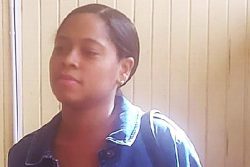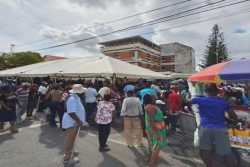Renowned artist Phillip Moore now spends most of his days in bed at his Lancaster, Corentyne home, where he is surrounded by his creations.
Although Moore has called it a day, he is still known by the community as the “the man who designed the monument,” a testament to the enduring link between the artist and his most famous creation, the 1763 monument. The monument, which still towers over the Square of the Revolution in the country’s capital, commemorates the Berbice slave uprising led that year by Cuffy and symbolises the struggle of the Guyanese people for their liberation.
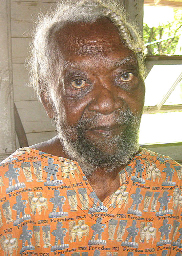
At the home Moore now shares with son Phillip Jr. and his family, there are less notable signifiers of his long career. The house cannot be missed. There’s a large painting on the veranda about the slave trade that shows the first bank that the planters built with the profit gained from selling slaves. Inside, visitors are greeted by another huge piece, which is painted on an empty paper barrel. It depicts the World Trade Centre buildings in New York City, prior to the September 11, 2001 terrorist attacks, with busy city streets and other buildings, while a large bird flies overhead. In the living room, there hangs a chandelier that looks like an enormous wind chime, which was made from materials including used hub caps. And sitting in a corner of the house, there is the sculpture, titled the ‘Masking of Martin,’ which depicts slain US civil rights leader Dr. Martin Luther King Jr., with a number of other “heads” around him. The piece shows that “many other people fought for the redemption of black people from slavery besides him [King]. At least Martin Luther King was a sort of promise coming to Barack Obama, the first African [American] president of the US,” Moore said. What made the piece even more special, he had said previously, was that “a woman from France bought it but asked me to keep it in Guyana to inspire people.” In addition to the creations, there were lots of books around as well as photo albums, with pictures showcasing some of his great work.
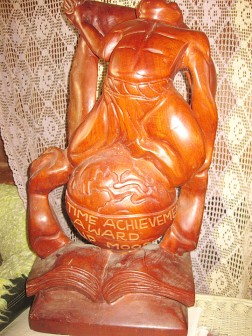
Moore, who was resting, was assisted to sit up on his bed at around 2 pm, on the day of our visit. He smiled brightly and said he remembered this reporter, who had interviewed him last year. He could not sit up for long though and asked the reporter to continue speaking to his son, who “has some ideas of his own.”
“An artist cannot stop thinking,” Moore had said in a previous interview with this newspaper, at a workshop he was conducting at Lichfield, West Coast Berbice. Now, at 89, his physical health has deteriorated and he cannot move around freely, but he still appears to have an active mind. He spends most of the day sleeping, retiring to bed at 7:30pm. But he usually wakes at 10:30pm and reads until 4:30am, before going to sleep again. His reading material includes newspapers, novels, and the Holy Bible.
He is highly respected in his community and rose to fame for his great work. When this newspaper approached persons for directions to his home, they responded, “Oh, the man who designed the monument?” They seemed proud that he had come from their village.
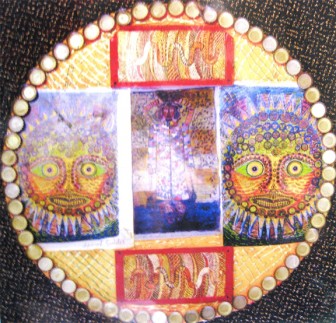
Moore designed the 1763 Monument while working as a professor at Princeton University in the United States. At the time, he was in charge of a meditation museum “where art became a symbol of deeper meaning in life.” He learnt through an advertisement in the local newspapers in 1970 that a competition was opened for the design of the monument and gladly submitted an entry and was elated when it was approved. He subsequently got down to designing the model at the university. It was later sent to England, where the statue was cast in bronze and shipped to Guyana in 1972.
Dreams and visions
Moore began life as a farm-boy, a far way from the well-known artist he is today. Even though Moore was “good at art at a young age” he did not know he would “become a talented and universal artist and become so famous.” In fact his career started “through dreams and visions” at age 19.
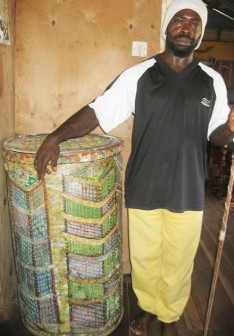
“At an early age I got to understand that the mind is very powerful and creative, and if you know how to deal with yourself you can get great things coming from your mind,” he said. After he finished school, he started working with his father on his farm. He wanted to become a policeman but that did not work out. He then wrote an examination to become a pupil-teacher but was not successful at that either.
His humble parents, knowing that he had potential, wanted him to become a lawyer. He then started working “at a cane field,” to supplement their income and to save the money for his studies. But that too was not to be. With a chuckle he remarked that “some divine intervention wanted me to become an artist.”
He explained that it all started one Friday as he was working in the field. “A wind came and encircled me and then something inside me said ‘so long you wanted to carve a man’s head out of wood, get up and do it.’”
He then took his cutlass and cut a piece of wood from a tree and carved a man’s head perfectly, although he had doubted he would ever be able to do it. After that, he said, persons started telling him, “You got all that talent and you working so hard on the farm.”
Although he had discovered his hidden talent, he still kept going to the backdam to work. “Not just because I was making a living but because I would get to cut the wood, which I used to carve at nights,” he explained.
As his talent grew, so did the demand for his pieces, and he started making his own moulds “so I could do mass production.”
He landed the job at the Princeton University after he kept on experimenting with different designs and did “fantastic work until persons from the US came and saw that my work was so original…” Before leaving Guyana, he worked with the History and Arts Council.
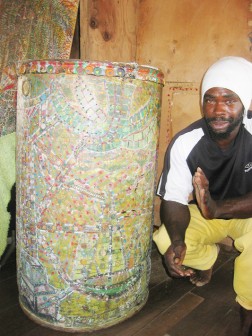
Upon his return, the father of five children, two of whom are alive, started working at the Burrowes School of Art. Here, he always taught students that “…art is a form of visual education to stimulate people.” Besides his talents as an artist, Moore is also a poet and composer although his work was never produced.
He resides with Phillip Jr., who works as a cane harvester at the sugar estate, his daughter-in-law and their four children. The family takes good care of Moore, a vegetarian since the age of eight, and ensures he is on a strict diet. His diet consists of fresh fruits, vegetables, whole wheat products and coconut water.
Phillip Jr. said his father had helped to motivate persons in the community to enhance their skills at a class to teach them sculpting. That was before he migrated to work in Georgetown.
He said proudly that his father’s pieces have decorated important places like the US and Brazilian embassies and the Cheddi Jagan International Airport, Timehri.
Moore has sold 150 of his works to the government and they form part of the national collection at the National Gallery, Castellani House. “Guyana is enriched with some of my work,” he said. As he gained popularity he also sold his collection to many persons who took them “all over the world.”
In addition, during the emancipation celebrations in 2009, he was honoured by the community with a “Lifetime Achievement Award” in the form of a wooden sculpture which rests in a corner of his home. The Ministry of Culture has also recognised his achievements and presented him with plaques at his home earlier this year.


